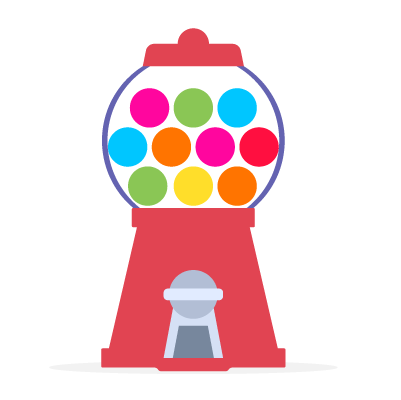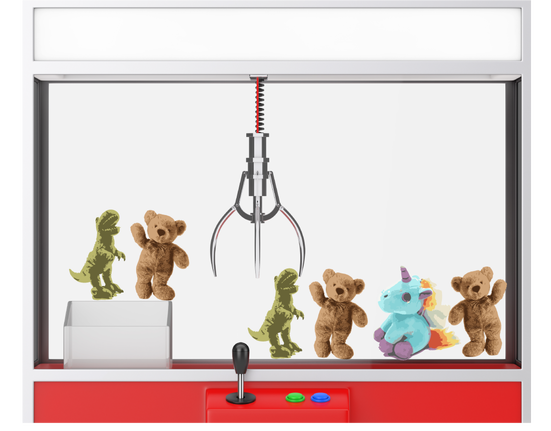D2.1 Describe the difference between independent and dependent events, and explain how their probabilities differ, providing examples.
Activity 1: Create Dependent and Independent Events from an Image
Show students the image of the gumball machine.
 Image One dispenser of round chewing gums contains two pink gums, two green gums, two blue gums, one red gum, one yellow gum and two orange gums.
Image One dispenser of round chewing gums contains two pink gums, two green gums, two blue gums, one red gum, one yellow gum and two orange gums.
Pose the following to the students:
- Give an example of two independent events for drawing gumballs from the gumball machine? Explain why they would be independent.
- Give an example of two dependent events for drawing gumballs from the gumball machine? Explain why they would be dependent.
- Normally, getting gumballs from such a machine represents independent events or dependent events? Why is this so?
- How does the probabilities of getting a pink gum ball differ in an independent event experiment from a dependent event experiment?
- Is there a gum ball colour that keeps the same probabilities in an experiment with independent events and an experiment with dependent events?
Activity 2: Differentiate Between Dependent and Independent Events
Determine the probability of grabbing two teddy bears in the two situations as defined below.

First scenario
The player puts the first caught stuffed animal back into the machine before starting over.
Second scenario
The player keeps the first stuffed animal caught before starting over.
Pose the following questions:
- Which of these scenarios has independent events? Dependent events?
- Why do their respective outcomes differ?
- Normally, grabbing lint from such a machine represents independent events or dependent events? Why is that?
- Is the probability of drawing two teddy bears the same in both scenarios? Why or why not?
